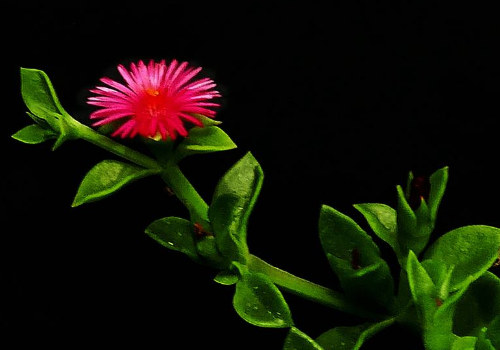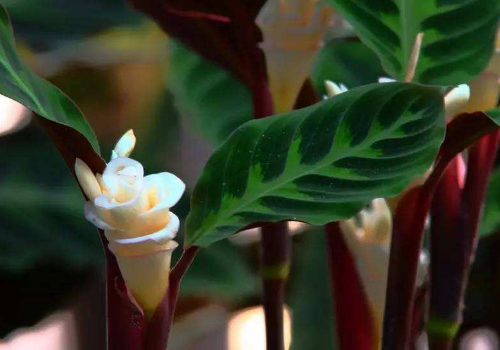What is the reason for the yellow and drooping leaves of velvet bamboo taro? how to solve it?
Generally, we can start from the growth habit, and we need to strengthen the management of wastewater in the later stage of breeding. What is the reason for the yellow velvet arrowroot leaves drooping? How to solve:
What is the reason for the yellow velvet arrowroot leaves drooping:
1. Less water in summer. Velvet arrowroot likes to grow in a humid environment. It is relatively dry in summer. If the moisture is insufficient or the air is relatively dry, it is easy for velvet arrowroot to appear burnt edge due to insufficient water supply during maintenance.
2. There is much water at low temperature in winter. In winter, the temperature is relatively low, easy to cause velvet arrowroot charred edge, if too much watering at this time, serious time will lead to velvet arrowroot rot.
3. Improper fertilization. Improper fertilization can also lead to curly edges of velvet arrowroot leaves, mainly referring to too much or too little fertilization. Too much fertilizer will cause root burn and leaves will appear burnt edge curl phenomenon, too little fertilizer will make velvet arrowroot lack certain growth elements and appear burnt edge.
4. Direct sunlight. Direct sunlight is not suitable for velvet arrowroot because too much light burns and scorches the leaves.

How to solve the problem of yellow velvet arrowroot leaves drooping:
1) Maintenance. Basically, for velvet arrowroot yellow drooping phenomenon, or to prevent mainly, in the maintenance process there are several points to pay attention to. First of all, it is best to use semi-shade to avoid direct sunlight. Water and fertilizer are also very important. In summer, we should keep the pot soil moist and spray more water. In winter, we should control watering. Fertilization, then, in the growth period every half month to apply a better, rich in nitrogen, phosphorus and potassium elements.
2. Cut. If the velvet arrowroot leaves are already yellow and drooping, they need to be pruned. Spray the velvety arrowroot leaves with water first. This will help the pruning process and avoid more damage during pruning. Yellow drooping leaves will be pruned, the specific method is to use scissors to cut off the withered parts of the leaves, do not leave yellow edges, so that the leaves look green. Trim gently to avoid causing more damage to leaves.
Find out why the velvet arrowroot leaves are yellow and drooping.
How to do velvet arrowroot leaves yellow droop (with solutions) velvet arrowroot leaves yellow droop reasons
Velvet arrowroot is a common plant that can be seen in many places in China. Because of its high ornamental value by consumers like to buy. However, many people buy home, because of improper maintenance, there is a phenomenon of yellowing leaves, in fact, want to avoid is also a knack.
How to do velvet arrowroot leaves yellow droop (with solutions)
1) Maintenance. Basically, for velvet arrowroot yellow drooping phenomenon, or to prevent mainly, in the maintenance process there are several points to pay attention to. First of all, it is best to use semi-shade to avoid direct sunlight. Water and fertilizer are also very important. In summer, we should keep the pot soil moist and spray more water. In winter, we should control watering. Fertilization, then, in the growth period every half month to apply a better, rich in nitrogen, phosphorus and potassium elements.
2. Cut. If the velvet arrowroot leaves are already yellow and drooping, they need to be pruned. Spray the velvety arrowroot leaves with water first. This will help the pruning process and avoid more damage during pruning. Yellow drooping leaves will be pruned, the specific method is to use scissors to cut off the withered parts of the leaves, do not leave yellow edges, so that the leaves look green. Trim gently to avoid causing more damage to leaves.
The reason why the velvet arrowroot leaves are yellow and drooping
1. Less water in summer. Velvet arrowroot likes to grow in a humid environment. It is relatively dry in summer. If the moisture is insufficient or the air is relatively dry, it is easy for velvet arrowroot to appear burnt edge due to insufficient water supply during maintenance.
2. There is much water at low temperature in winter. In winter, the temperature is relatively low, easy to cause velvet arrowroot charred edge, if too much watering at this time, serious time will lead to velvet arrowroot rot.
3. Improper fertilization. Improper fertilization can also lead to curly edges of velvet arrowroot leaves, mainly referring to too much or too little fertilization. Too much fertilizer will cause root burn and leaves will appear burnt edge curl phenomenon, too little fertilizer will make velvet arrowroot lack certain growth elements and appear burnt edge.
4. Direct sunlight. Direct sunlight is not suitable for velvet arrowroot because too much light burns and scorches the leaves.
What are the main diseases of velvet arrowroot?
1. Disease blight. Leaf blight can dry out large areas of leaves. At the beginning of the disease, red folds and small spots appeared on the leaves, and soon expanded into a circle, and the spots were pale brown and water-stained. The edge of the late disease spots become reddish brown, if not treated, it can quickly make half of the leaves or even the whole leaf die.
2. Anthrax. Air humidity requirements between 75-90%, low air humidity will appear leaf roll, dead leaves, charred edge phenomenon, this is anthrax.
3. Leaf spot disease. Generally, the infection started from leaf edge and leaf tip, and the disease spots were irregular, reddish brown to gray brown, and the disease was serious in the lower leaves of the plant.
Control method of velvet arrowroot disease
1. Disease blight. Control method: When the disease occurs, turn over the pot in time, cut off the rotten roots of the diseased leaves, soak them in methyl thiophane solution for 15 minutes, dry them and change them into sterile plant materials for cultivation, then use chlorothalonil (also known as Dakening) 75% wettable powder, 600-800 times of water, spray once every 7-10 days, spray three times continuously, and effectively subdue the disease.
2. Anthrax. Control methods: need to spray carbendazim, thiophanate-methyl and other systemic wettable powder 800-*** times solution for control. This kind of disinfectant can also be diluted 500-600 times to irrigate the basin soil. Pay more attention to spraying water on leaves or growing environment in the future to increase air humidity and reduce the occurrence of anthrax. Watering is best to choose pure water or rainwater, tap water must be dried for 2-3 days or so before watering. Fertilization with light fertilizer frequently applied as the principle, mainly nitrogen fertilizer can be, it is best to choose fully water-soluble fertilizer, such as 'flower more' and other soilless culture special fertilizer.
3. Leaf spot disease. Control method: Use lime equivalent Bordeaux mixture spraying control.
Velvet arrowroot leaves yellowing is generally caused by fat water or light, in the process of breeding need to pay more attention to these aspects. Velvet arrowroot is also susceptible to disease infection, so good disease control is also an important factor to ensure its growth.
- Prev

How to apply fertilizer to peony spider plants without flowering?
Peony spider plant is a kind of flowering fleshy, but there are many people who raise peony spider plant and find that their flesh shows no signs of flowering. How to fertilize peony spider orchid? How to do without flowering: peony spider how to fertilize: fertilizer and soil, peony spider is a foreign species
- Next

What about when velvet taro blossoms or not?
Velvet taro can well absorb harmful substances in the air, which can greatly improve the home environment. When does velvet taro blossom? What if it doesn't blossom: when will velvet taro bloom: the flowering period of velvet taro is from May to June every year. Head ovate, the size of a goose egg
Related
- Fuxing push coffee new agricultural production and marketing class: lack of small-scale processing plants
- Jujube rice field leisure farm deep ploughing Yilan for five years to create a space for organic food and play
- Nongyu Farm-A trial of organic papaya for brave women with advanced technology
- Four points for attention in the prevention and control of diseases and insect pests of edible fungi
- How to add nutrient solution to Edible Fungi
- Is there any good way to control edible fungus mites?
- Open Inoculation Technology of Edible Fungi
- Is there any clever way to use fertilizer for edible fungus in winter?
- What agents are used to kill the pathogens of edible fungi in the mushroom shed?
- Rapid drying of Edible Fungi

